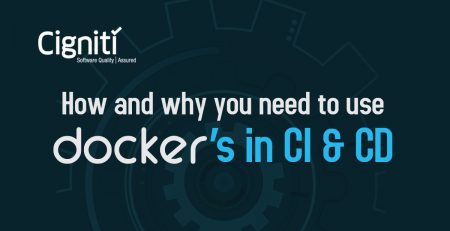Tackling Microservices Testing Challenges: Effective Mitigation Strategies
According to Statista, the microservices architecture market will grow at a robust CAGR of 19.6%, reaching $10.86 billion by 2027, up from $4.44 billion in 2022.
The shift to microservices architecture has revolutionized software design and development, significantly enhancing agility, scalability, resilience, delivery times, cost-effectiveness, and more. Since Dr. Peter Rodgers coined the term “micro web services” in a cloud computing presentation, the architecture has evolved dramatically, gaining substantial momentum in the early 2010s.
Microservices is a software design approach that decomposes an application into small, independent services, each running in its own process and often distributed across different hosts. These services communicate via lightweight mechanisms like REST APIs.
Microservices architecture enables scalable and efficient operations in various industries, a few cases in point:
Netflix: User management, recommendation engine, and video streaming, allowing independent scaling and quick adaptation to demand.
Uber: User management, ride booking, real-time tracking, and payment processing, enabling high-traffic handling and rapid feature introduction.
Airbnb: Property listings, search and filtering, reservations, payments, and messaging, ensuring efficient scaling and a seamless booking experience.
Amazon: Product cataloging, inventory management, payment processing, customer reviews, and order fulfillment, allowing scalable operations and a seamless shopping experience.
Despite their advantages, microservices’ architectural complexity introduces unique testing challenges. Comprehending the intricacies of microservices and catering to their distinct testing needs is essential for guaranteeing smooth integration and optimal performance within intricate software architectures.
What Is Microservices Testing?
Microservices testing verifies the functionality of individual components within a microservices-based application, ensuring their performance and stability both independently and within the broader system. This involves comprehensive testing of each microservice using various methodologies such as unit, integration, and end-to-end testing to guarantee a seamless experience for end users and maintain overall system quality. However, this testing approach presents challenges, including managing the complexity of the architecture, establishing observability for microservices, and addressing communication gaps among teams developing different microservices.
Why Microservices Testing?
Testing microservices-based applications presents challenges due to their distributed nature, necessitating individual and integrated testing. The conventional method of testing all microservice components simultaneously isn’t practical, as they often operate in different environments. Additionally, changes to a provider microservice might inadvertently disrupt consumers’ API usage, highlighting the need for comprehensive testing strategies.
Setting up a complete test environment incurs high costs and complexity, while automated tests may lag the rapid pace of development. Manual testing during the build stage offers insights into service interactions but is hindered by the application’s complexity. Understanding microservices behavior is more feasible in production than during development, further complicating testing efforts.
Testing microservices poses several key challenges:
Microservices architecture is distributed and complex by nature. In addition, microservices were designed to enable agility and continuous delivery, so testing must also adhere to these requirements. Testing microservices poses challenges due to specific prerequisites and complexities in integration.
Integration Testing and Debugging: Crafting effective integration tests requires deep knowledge of each service, and analyzing logs across multiple microservices can be mentally taxing.
Effective Service Isolation: Microservices often depend on other services to function. These dependencies make it difficult to isolate a service accurately for testing.
Revise Software Architecture: Redesigning applications for microservices can be arduous, particularly for large, complex enterprise systems.
Conducting End-to-End Testing: Many service interactions make end-to-end testing difficult, cumbersome, and prone to errors.
Verifying Version Compatibility During Testing – With multiple services being updated independently and simultaneously, ensuring the right versions are tested is complicated and tedious.
Selecting Optimal Tools: Many microservices testing tools require teams to choose the platform for the use case.
Cleaning Up Software Libraries: With diverse development approaches across microservice teams, maintaining and managing custom scripts and code becomes crucial to avoid redundancy.
Time-consuming and Expensive: Testing microservices inefficiently can lead to significant time and cost implications.
Low Visibility: In a distributed system, limited visibility into services, interactions, and workflows makes it difficult to monitor the health of individual services and the entire system. This also complicates the creation of a comprehensive testing suite.
Why Cigniti?
Cigniti demonstrates a robust capability in executing microservices testing, adeptly addressing the multifaceted challenges inherent in such endeavors. Through a comprehensive approach encompassing integration testing, contract testing, end-to-end testing, and performance testing, Cigniti ensures the reliability and functionality of microservices architectures.
Furthermore, their expertise extends to service virtualization, facilitating seamless testing in complex, distributed environments. Integration with CI/CD pipelines further streamlines the testing process, enabling rapid deployment and iteration.
With a strong emphasis on test automation, Cigniti enhances efficiency and accuracy while reducing time and cost burdens associated with manual testing. Its Intelligent No-Scripting Test Automation (iNSta) enables enterprises to build production-grade test automation suites without scripting expertise. It leverages AI to provide an adaptive framework that supports automation artifacts to evolve in sync with the application under test. iNSta streamlines reusable test asset development and integrates with the latest CI/CD tools and cloud (Sauce Labs, Browser Stack) infrastructure to support continuous testing.
Cigniti’s holistic approach to microservices testing positions them as a trusted partner in navigating the intricacies of modern software development landscapes, ultimately ensuring the delivery of robust and reliable microservices-based applications. Need help? Contact our Microservices Testing experts to learn how it ensures seamless integration and enhances scalability, reliability, and fault isolation in your applications.





Leave a Reply